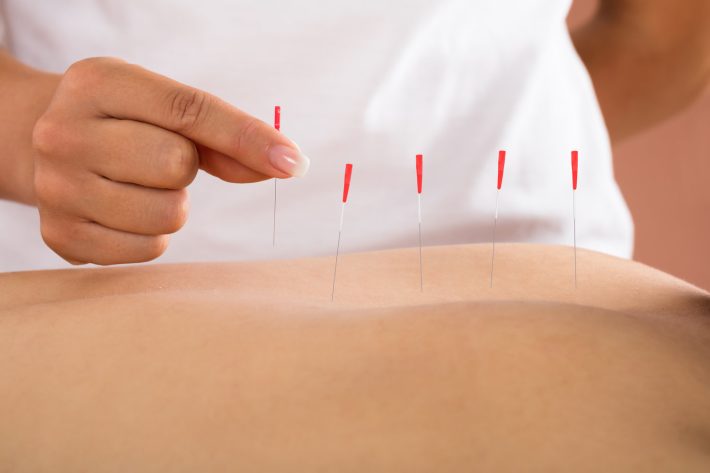
Dry needling is a therapeutic technique aimed at relieving muscle pain and tension. It involves inserting thin needles into specific trigger points within the muscle to help alleviate discomfort and improve function. Unlike acupuncture, dry needling is based on modern understanding of the musculoskeletal system. This approach has become increasingly popular in sports physiotherapy for its effectiveness in addressing muscle-related issues and enhancing athletic performance.
How Dry Needling Works:
Dry needling focuses on targeting muscle knots, which are areas where muscle fibres have tightened up and can cause discomfort. Using fine needles, the technique stimulates these trigger points, encouraging the muscle to release and relax. This stimulation improves blood flow, which can help reduce pain and increase mobility.
According to a Dianella sports physio, the process is particularly useful for conditions like back pain, neck pain, and tension headaches, as well as for athletes dealing with muscle soreness or tightness. Each needle is inserted with precision to ensure the most effective results, and practitioners are trained to minimise any discomfort. The goal is to help the muscle function better, easing tension and promoting overall well-being.
Is Dry Needling Painful?
The thought of needles can understandably make some people anxious. However, the experience of dry needling is generally well-tolerated and described as only mildly uncomfortable by most.
The sensation felt during the procedure varies. Some report a slight prick, while others may feel a bit of pressure or a twitch. The needles used in dry needling are extremely fine, much thinner than those used for injections, which helps reduce discomfort.
What Does Dry Needling Treat?
Dry needling is versatile and can address a variety of musculoskeletal issues. A study published in the Journal of Clinical Medicine has shown its effectiveness in improving quality of life and range of motion in areas like the neck and shoulder when compared to placebo treatments in the short term. This makes it a valuable tool for those struggling with restricted movement or chronic pain in these regions.
How is Dry Needling Beneficial in Sports Physiotherapy:
In sports physiotherapy, dry needling is highly beneficial for both injury management and performance enhancement. The study published in the Journal of Clinical Medicine indicates that when dry needling is combined with other physiotherapeutic interventions, the overall treatment effects are significantly enhanced compared to these interventions alone. This makes it particularly effective for athletes who need to recover quickly and maintain optimal performance levels.
For athletes, dealing with muscle soreness and tightness is common.
- Dry needling helps in addressing these issues by releasing muscle knots and promoting relaxation.
- Improved blood flow to the targeted areas helps reduce pain and speed up recovery times, making it easier for athletes to get back to their training routines.
- Dry needling can provide relief from acute pain due to injuries or chronic tension from overuse.
Finding a Qualified Practitioner:
- Look for professionals with proper training and certification in this technique to ensure they are well-qualified. You can find an experienced sports physio in Morley who specialise in dry needling.
- Checking their credentials, reading client reviews, and seeking recommendations from local sources can guide you to a trusted expert.
- Local sports physios can provide personalised care tailored to your needs. Experienced practitioners will listen to your concerns, assess your condition, and develop a treatment plan that addresses your specific issues. Search “sports physio near me” to get started.
- It’s essential to feel comfortable with your practitioner, so don’t hesitate to ask about their experience and approach to dry needling.
Frequently Asked Questions:
-
What’s the difference between dry needling and acupuncture?
Dry needling is a modern technique used by physiotherapists to relieve muscle pain and tension by inserting thin needles into trigger points. Acupuncture focuses on balancing the body’s energy (Qi) by stimulating specific meridian points.
-
Who should not have dry needling?
People with bleeding disorders, a fear of needles, or those who are pregnant should consult a healthcare professional before undergoing dry needling.
-
Is dry needling better than massage?
Both have benefits. Dry needling targets deep muscle knots, while massage provides overall relaxation and circulation improvement. The best choice depends on individual needs.
-
Where is dry needling more effective?
It’s particularly effective for treating muscle pain, tension headaches, and conditions like tennis elbow or sciatica.
-
How long does it take to see results?
Some people feel relief immediately, while others may need multiple sessions for lasting effects.
Dry needling is an effective treatment for relieving muscle pain, improving mobility, and accelerating recovery. While it works well on its own, combining it with other therapies like physiotherapy or massage can enhance its benefits. If you’re considering dry needling, consult a sports physio in Beechboro to determine if it’s the right approach for you.
At Morley Physiotherapy Centre, we provide a range of treatments to help you recover faster and perform at your best. Visit https://morleyphysio.com.au/ to learn more about how we can support your health and well-being.
